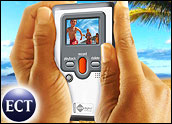
Microsoft has opened up its usability specifications, the User Interface Automation (UIA), to the Accessibility Interoperability Alliance (AIA), a group formed to develop standards for making user interfaces more accessible to people with disabilities.
The 2,600-page specification document, which was released royalty-free, marks the first significant upgrade to the Microsoft Active Accessibility (MSAA) standards, which were released with Windows 95.
The new standards operate as both a bridging technology for the previous standards, which creates backward compatibility for current screen readers and other devices, and forward-looking technology that attempts to create a universal standard for the Linux, Solaris, Apple and Microsoft operating systems.
“We are trying to remove the barriers to creating technologies that are more accessible and work across all platforms,” said Norm Hodne, Microsoft Windows Accessibility Lead. “We’ve creating the plumbing that works between software applications and operating systems.”
Instituting Standards
Microsoft released the standards to the AIA just one month after the organization was formed, largely with the help of the Redmond, Wash., software giant. However, the AIA isn’t simply a one-company operation.
The group is a collaboration of operating system companies, software application building companies and consumer electronic companies. Traditionally, these companies have been reluctant to work too closely on certain types of standards and specifications because it would open up trade secrets to competitors.
That has even been the case with accessibility standards, said Hodne. For several years, these standards have been pieced together through individual interactions between the three groups. The organization, though, is set up to mitigate some of those concerns. It is run by a three-member steering committee, with members serving a single two-year term, according to the organization’s Web site.
The group’s goal is to create accessibility standards across three fronts: features within products, products and cross-platform compatibility.
Expanding Reach
Creating a comprehensive, cross-platform — and backward-compatible — standard is important, particularly as more government agencies and public organizations move to the Web.
The U.S. Department of Education, for instance, reported a 400 percent increase in students with disabilities currently in school since 1991. As the population continues to age, more people with slight vision, hearing and dexterity issues are looking for solutions to help them interact with the digital world, according to Forrester Research.
Eventually, the government may be inclined to require companies develop a standard, which is something few technology companies want.
“More and more, corporations and government services are being drawn to the Web,” said Hodne. “That is why [the AIA] wants to solve this accessibility problem before without a government mandate to do it.”











































